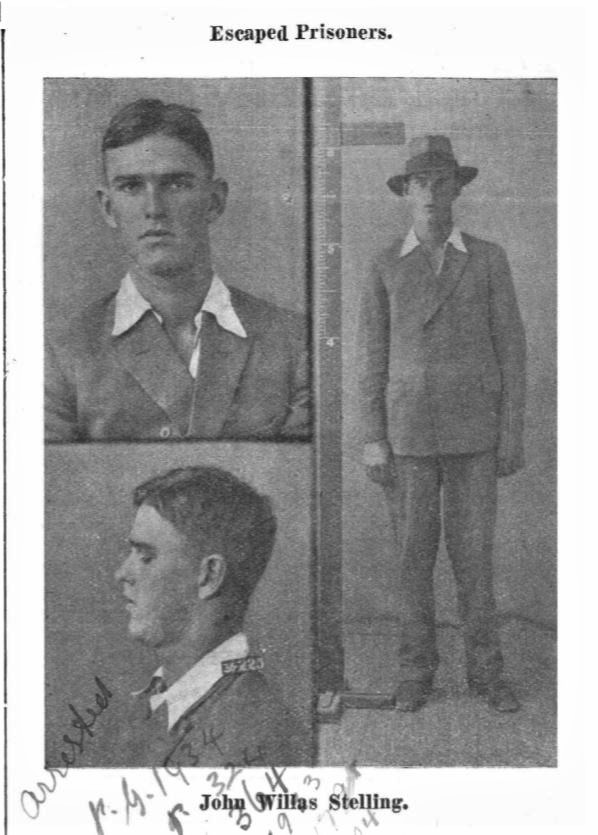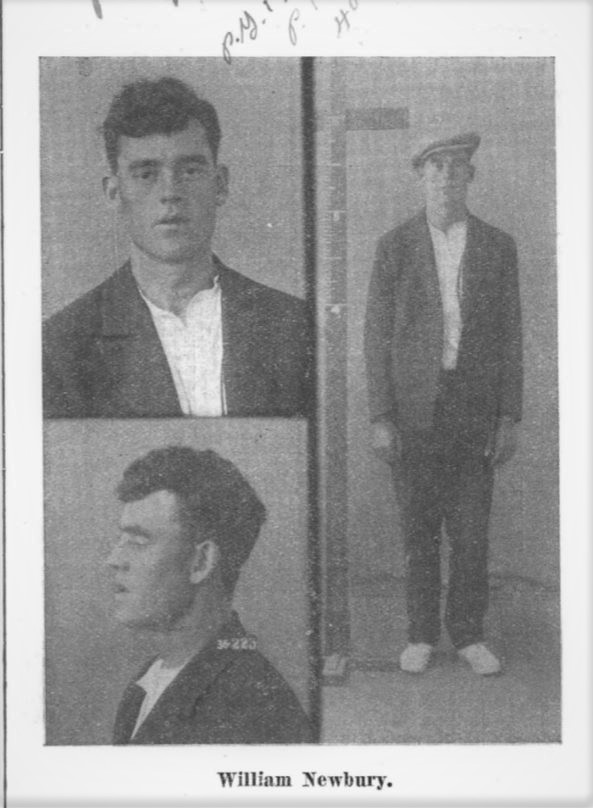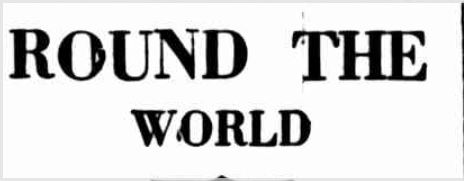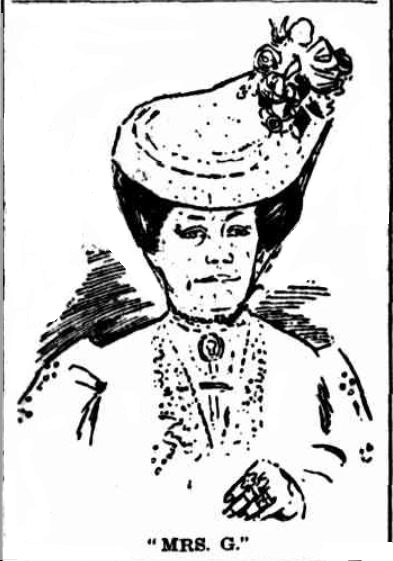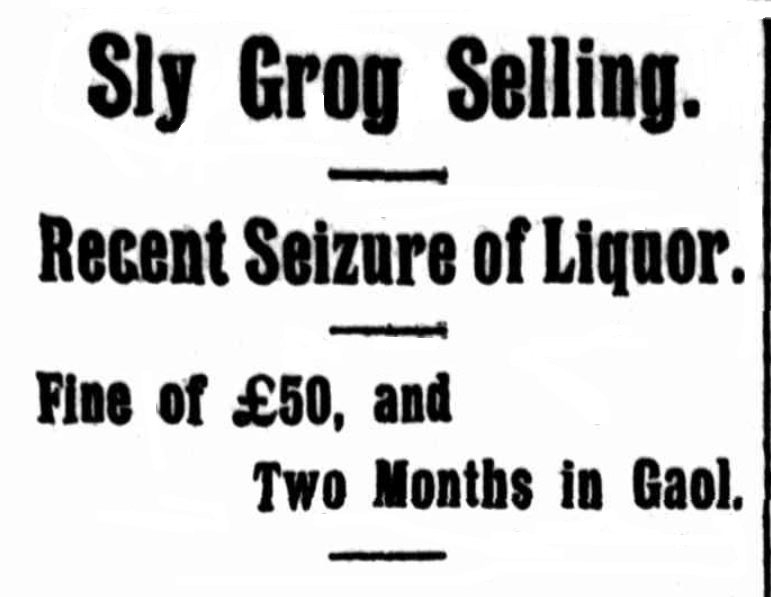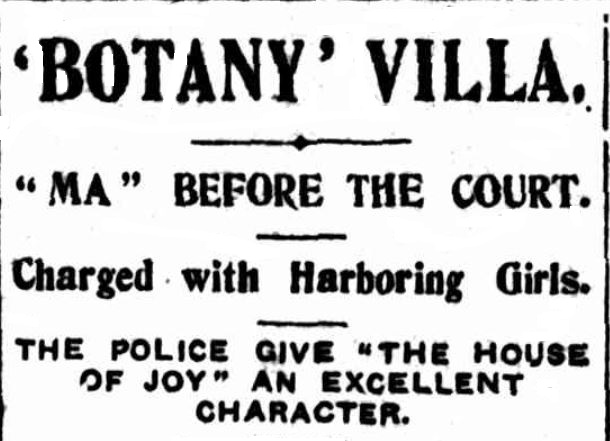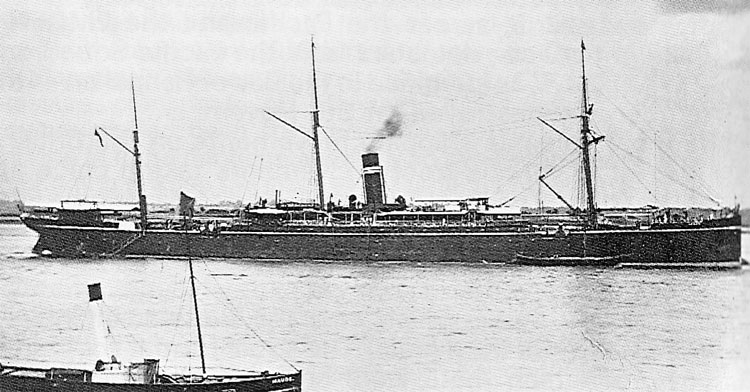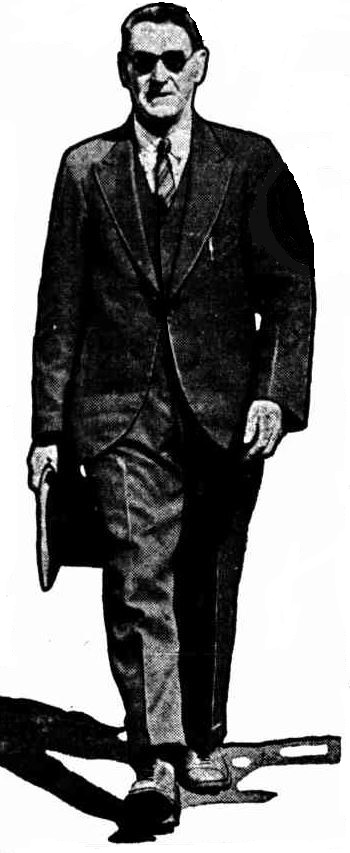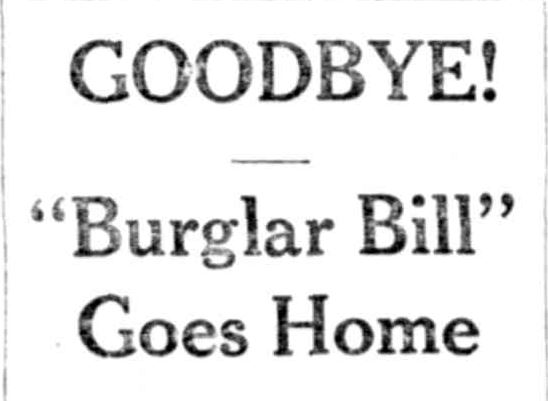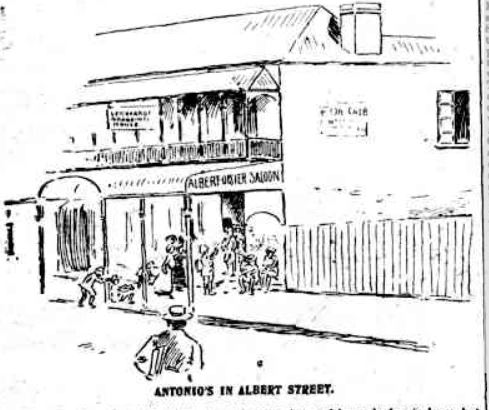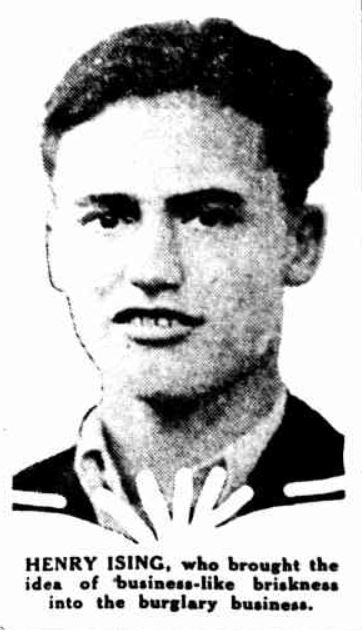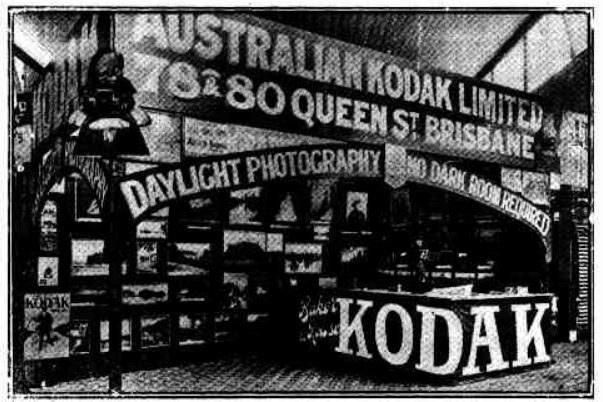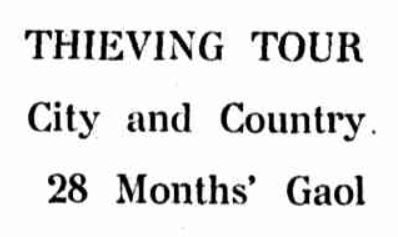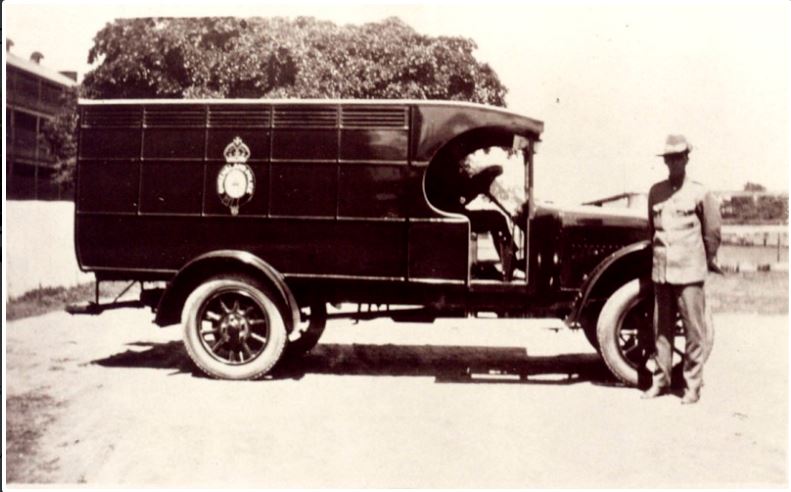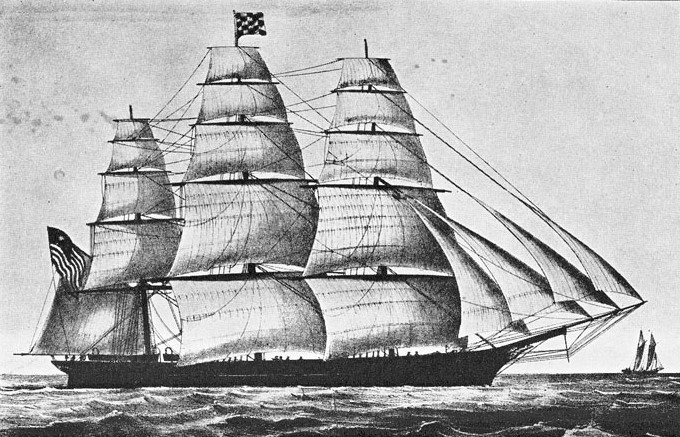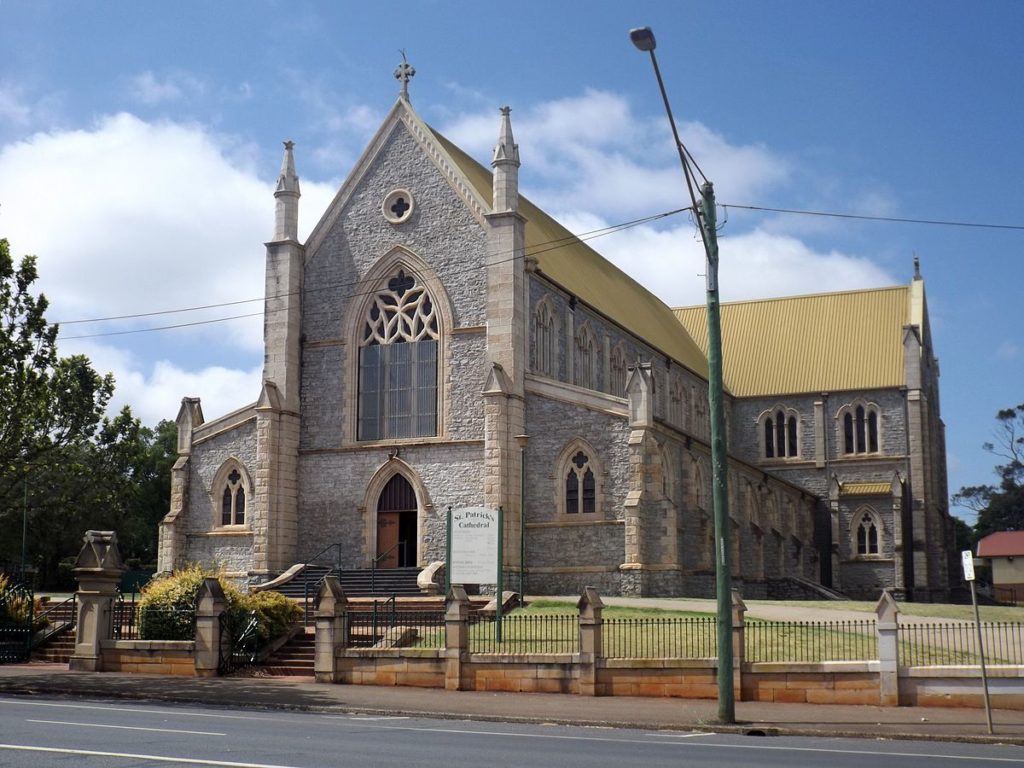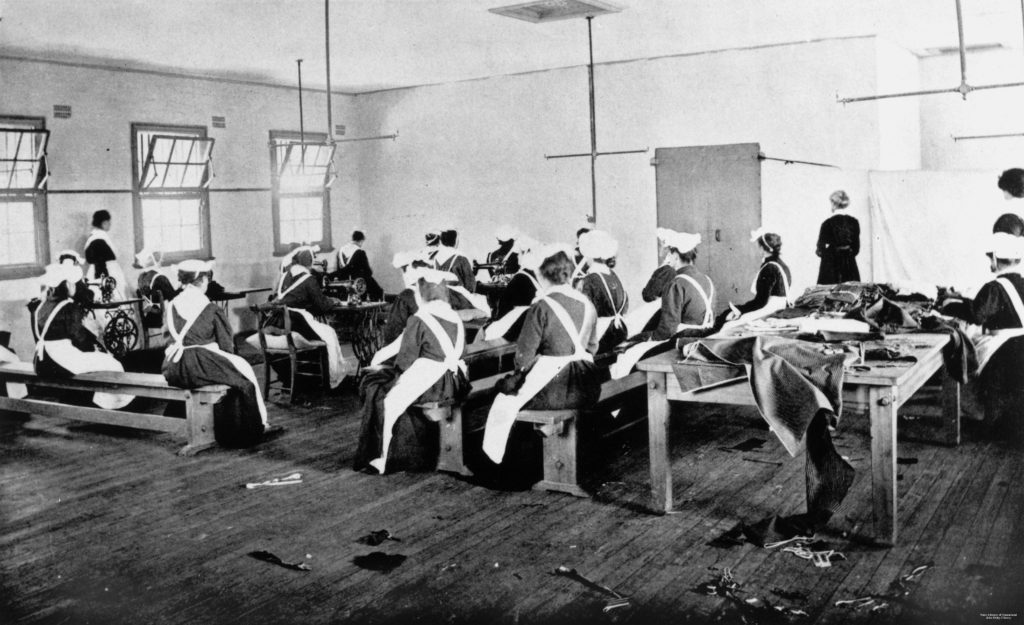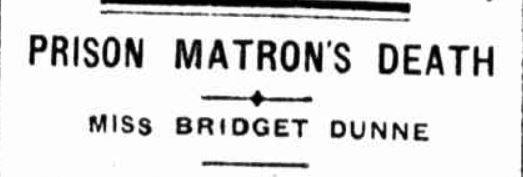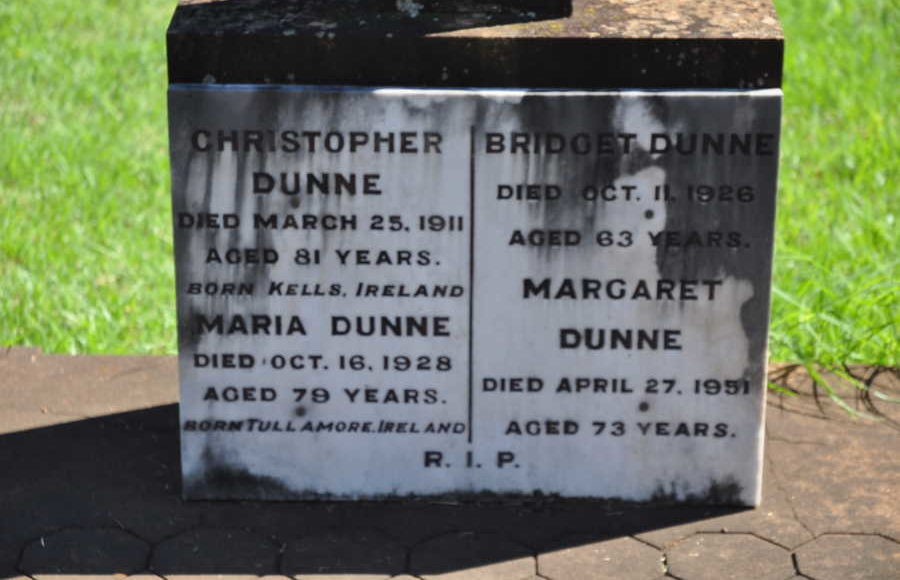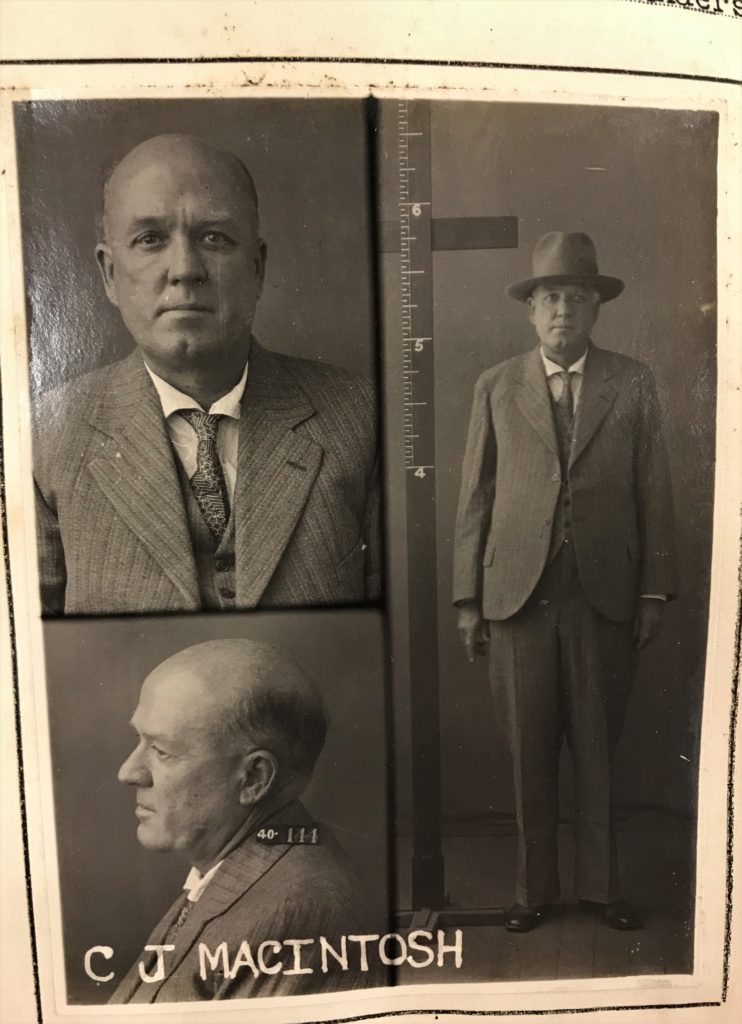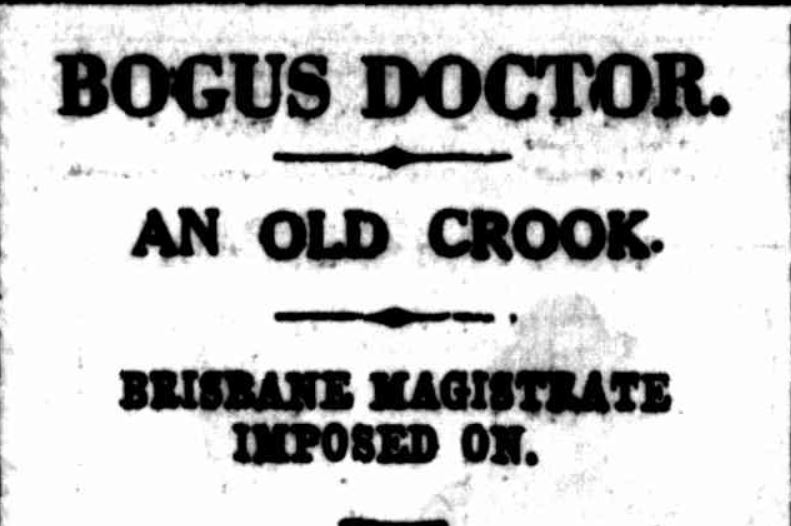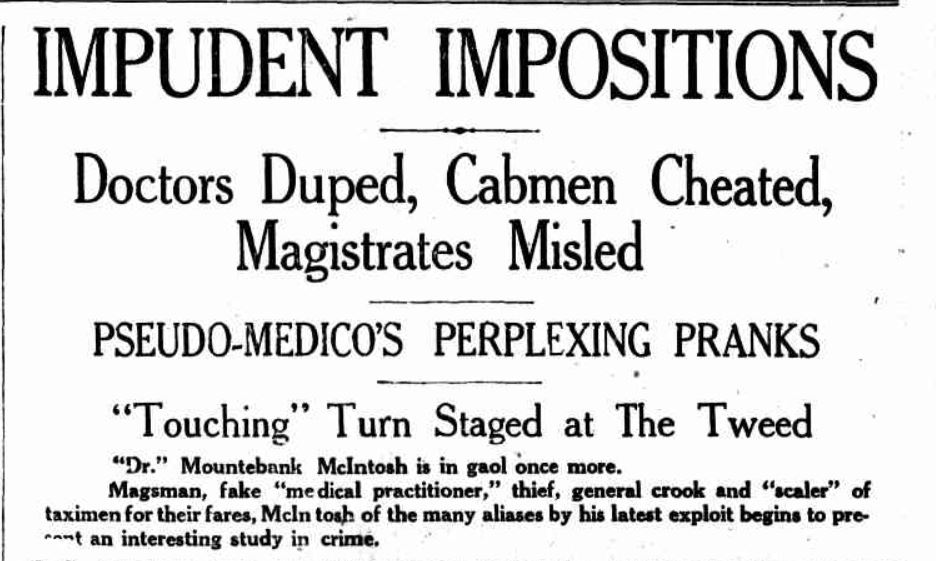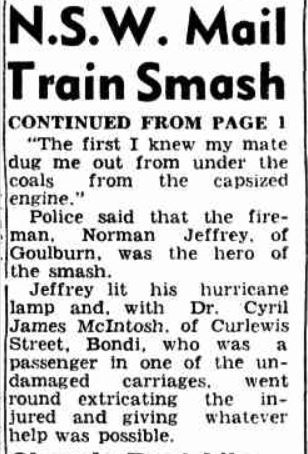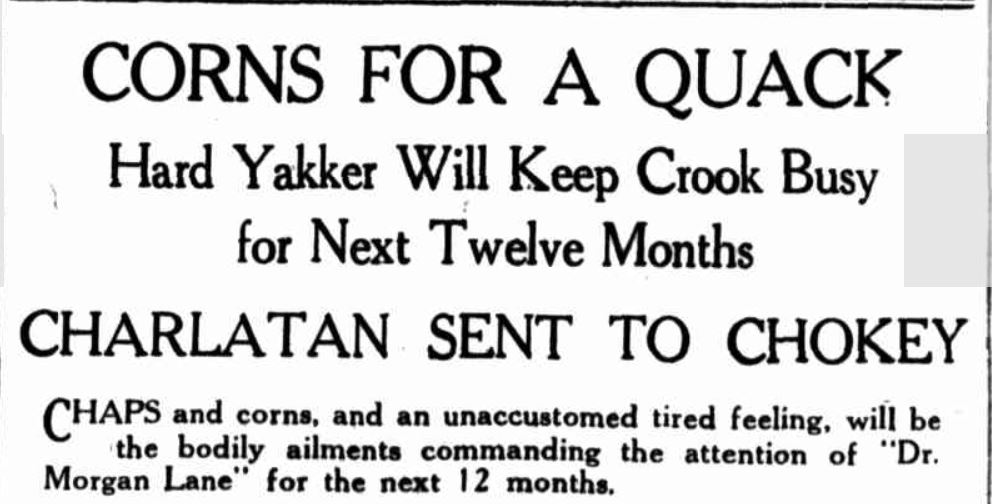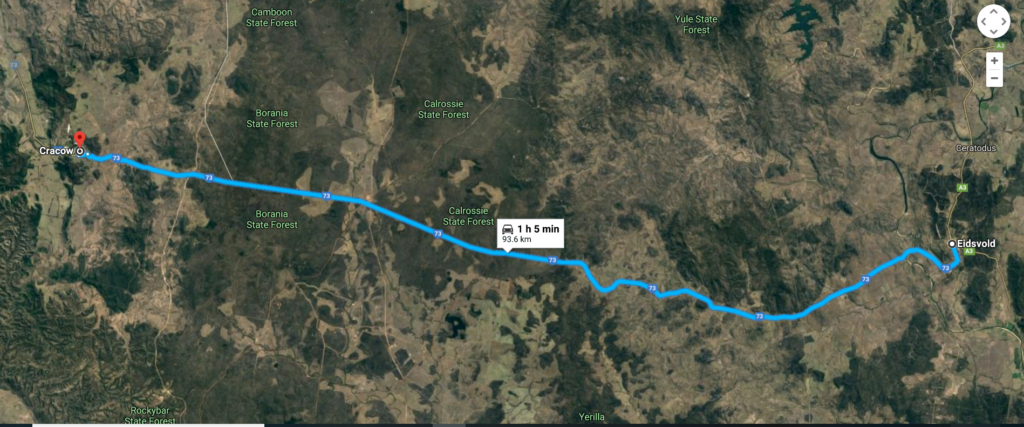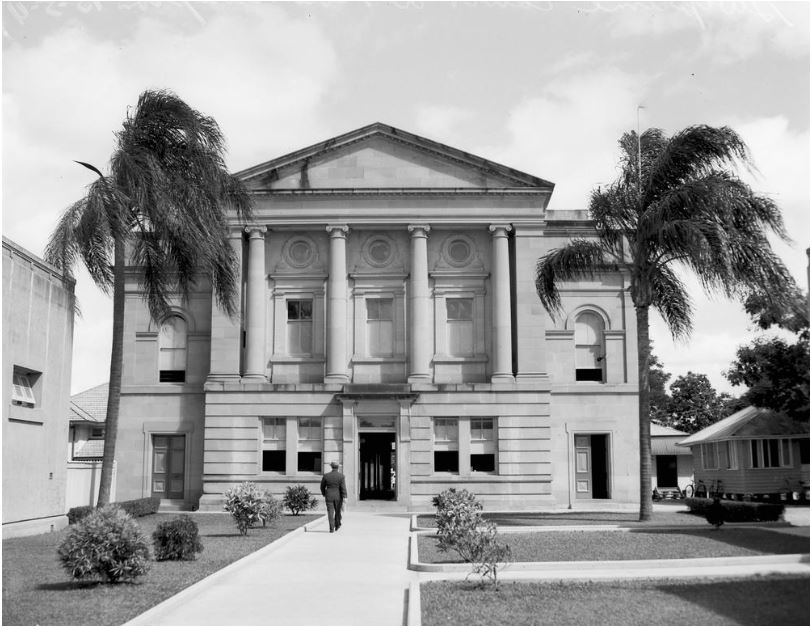The Reverse Escape
- On : 7 September, 2018
- By : Boggo Road Gaol
- Category : Stories
- View : 1884
The Reverse Escape – John Willas Stelling and William Newberry
Three young men; each of them out of work and down on their luck broached the big lights of Brisbane for a change in their fortunes. Three days and a short voyage later their trip to Brisbane would end in salvation for one and for the other two a twelve month stay in a hell hole.
John Stelling (Description at discharge)
Native Place: South Australia
Age: 25
Height: 6 feet (183cm)
Build: Proportionate
Complexion: Fresh
Hair: Fair
Eyes: Blue
Weight: 11 stone 8 oz (73.5kg)
Remarks: Tattoo of woman on back of left forearm, sailing ship and anchor and “Homeward Bound” on front. And “Laurel” on right forearm. Four small moles on back.
William Newberry (Description at discharge)
Age: 23
Height: 5 feet 10 inches (178cm)
Build: Proportionate
Complexion: Fresh
Hair: Dark Brown
Eyes: Light Blue
Weight: 11 stone (70kg)
Remarks: Top of little finger left hand squashed; large scar inside left thigh.
The Crime
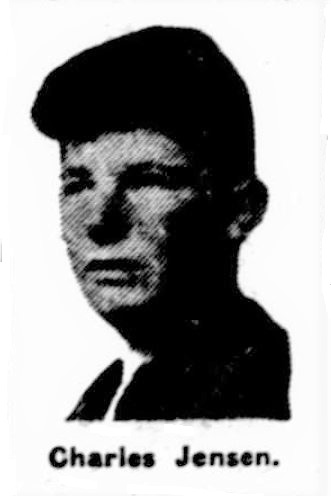
William Newberry, a ships firemen and John Willas Stelling, a seaman, were known to each other. Both having come from South Australia, they had been working on coastal and overseas shipping. Recently having been paid off from their last overseas voyage they had spent their money quenching their thirst from months at sea. All well and good, but now they found themselves broke and in need of work. No problem! They would just get another job and earn themselves more. Of course, there is an economic downfall, and no one is hiring.
Sometime on the road from the Port of Melbourne to Brisbane they came across young Charles Henry Jensen, who had left Melbourne and decided to seek his fortune elsewhere. The eighteen-year-old labourer had even less prospects than Newberry and Stelling, with no family in Australia he really was in a dire situation. Whether they took pity on him or whether he just decided to tag along is not known.
The trio arrived in Brisbane on the 25th of October, trying their luck on the coastal ships at the Hamilton reach they came up empty. It was clear they had to come up with another plan. Meanwhile the crew of a local ship had taken pity on them and plied them with a bit of drink and a friendly game of cards.
In the wee hours of the 26th, still drunk from their outing with the crew. The wily Stelling and Newberry spied the Helene II, the vessel belonging to Colonel Frederick Annand being loaded with provisions for its master and his friends. A little further out the Mako owned by Dr Val McDowell. Spotting the dinghy belonging to George Robinson, the three men pushed it into the water, making for the Helene 2 a motor launch with the plan of transferring its provisions to the Mako, a much larger and sea going motor launch.
Shipwrecked
They broke a skylight gaining access to the Mako but were unable to start her. Transferring back to the Helene II, they then towed her down river. Jensen acting as pilot, the voyage was going swimmingly until in the early morning light, a large ship appeared on their bow. Having no knowledge of the river they sailed the wrong side of the beacons. The wash of the ship running them aground on Wreck Island (later known as Bishop Island and now part of the Port of Brisbane)
Once ashore, the men decided it would be best to eat and gather their strength. There were ample provisions and a bottle of Brandy aboard the Doctor’s launch. They found a hurricane lamp to use as a stove, but it toppled over setting fire to the Helene II. The two experienced seamen quickly quenched the fire but not before terrible damage had been done. They were forced to eat their meal cold and raw. No doubt adding to their misery.
Daylight saw the three men, insect bitten and musing their bad luck. Of course, Colonel Annand, who had planned a voyage that day had noticed his vessel missing. Dr McDowell too, his motor launch. Report was made to the Water Police, where immediate search was launched. Colonel Annand even had hired an aeroplane for a bird’s eye view. It was Colonel Annand that had first spotted the vessels at the mouth of the river.
Capture
The missing vessels were found ran aground on Wreck Island, abandoned. Jensen, Newberry and Stelling having seen the water police coming, scattered amongst the mangroves in a poor attempt to hide. Taken into custody, they were taken to the lockup and set to appear the next day before Police Magistrate Hishon.
Pleading guilty, the three men were convicted of the theft and damage of the three vessels. Jensen having begged that his behaviour was only due to his being drunk and that he would not have ordinarily undertaken such a foolish venture. The magistrate seemingly took pity of Jensen, releasing him to the care of the Salvation Army with a fifteen-pound surety that he would not appear again within twelve months. Ensign Birt of the Salvation Army undertook to locate his parents who were holidaying in Norway.
Newberry and Stelling were not so lucky. Being found guilty on each of the five charges, they were sentenced to two months with hard labour on each charge, to be served cumulatively.
To St Helena
At this time in Brisbane, the majority of male prisoners were not held at Boggo Road Gaol. Only those with long sentences or those under the sentence of death were held there. Female prisoners having their own division (Number two division and the only remaining portion of Boggo Road Gaol). The short-term men were transported to St Helena Island, in Moreton bay for the duration of their sentence. This prison was more like a prison farm, with more freedom and a less rigid system of management than Boggo Road.
Newberry and Stelling were transported by the government vessel Otter to begin their sentence in November 1929.
Escape!
Tired after just a few short months imprisoned at St Helena, a prison that has a reputation for its brutal treatment of prisoners. Newberry and Stelling decided on the 15th of March that it would be their last day on the Island. Somewhere between 6:30 and 8pm they made their escape. Knocking the padlock off the boathouse storing the rowboats belonging to the government, they eased a boat into the water and paddled silently across the bay.
Their absence was noted around 8pm and the alarm was sounded. Police were contacted, and all attempt was made to locate them in the darkness. Ever so silently they paddled to shore, eventually landing at Lota.
The next morning, the missing boat was located at the mouth of Lota Creek. Newberry and Stelling were no where to be found. It wasn’t until later in the morning that a report of a missing car from Cleveland belonging to Dr. Arthur Howard came in that police had even a clue where to start looking.
The Stolen Car
The distinctive single seater Studebaker Commander straight eight with red crosses on the number plates was eventually located in Guy street at Warwick, just a few miles shy of the border. It was soon discovered that the car had run out of fuel, and rather than risk refuelling, the prisoners simply abandoned it. It was discovered by Warwick Police and returned to the owner without damage.
Newberry Captured
William Newberry had been on the run for three and a half months, when with ten other young men were arrested for malicious damage in Clovelly, a suburb of Sydney, New South Wales. The men had done serious damage to a cottage to the value of fifty pounds as part of a communist action. Newberry of course was using an alias. But it was quickly discovered his true identity. He was sentenced to six months imprisonment in Darlinghurst prison for his role in the communist action. He was then remanded back to Brisbane to face punishment for the escape from St Helena.
Returned to Brisbane he faced sentencing before Police Magistrate Leahy, Newberry was sentenced to an additional two months and fourteen days for the escape from St Helena, in addition to serving the remainder of his sentence. All to be served with hard labour. This time, his sentence would be served in the notorious Boggo Road Gaol.
Surrender
Thursday 27th of September was like any other day at Boggo Road. It started and ended with the ringing of the bell to signal to the prisoners where they were meant to be and when. This day however still had a little more in store for the Superintendent Whitney. Shortly before 8pm, Superintendent Whitney was informed that a man wished to see him at the 
“You got away from St Helena four years ago,” said the Superintendent. “This is a strange place for you to visit!” “Yes, I am Stelling,” replied the escapee “I want to get this business over; can you tell me what to do?” Naturally Mr Whitney took the only course available to him and communicated with the police, who shared his surprise at the reappearance of Stelling.
Twice around the world
From the pages of the Courier Mail, 29th of September 1934.
According to Stelling’s story, after rowing ashore at Lota they then separated, and he had not since heard what had become of Newberry. Prison officials were able to inform, him, however, that his companion had been arrested some time ago.
An engineer by trade, Stelling was anxious to obtain a position on an overseas vessel, and, with that end in view, he set out for Sydney. Without money he was faced with the prospect of covering the journey on foot, but he was able to make his task easier by hailing passing vehicles.
Fortune favoured him when he arrived in Sydney, and within a few days he was on the high seas, booked as an engine-room hand in a cargo vessel. In England he was able to obtain only irregular employment, and eventually found himself once more afloat — this time bound for America.
Stelling was reticent as to the time he spent in the different countries and the names of the vessels in which he travelled, but last year he returned to England. Throughout his wanderings, he declared, he was unhappy in the knowledge that he was a fugitive from justice, and his varying fortunes convinced him that he would have been wiser to have served the remaining four months of his sentence.
Though he was able to obtain regular employment, his return to England did nothing to improve his peace of mind, and he determined to come back to Australia, disclose his identity, and serve the remainder of his term. “I am anxious,” he said yesterday, “to get this wretched business over, and start again with a clean slate.”
To accomplish his purpose, he obtained a berth in an Australian-bound steamer and reached Melbourne early this week. He arrived in Brisbane by train on Thursday afternoon, and four hours later was lodged once more in prison. That he had not been driven to his decision by dire necessity was evidenced by the fact that, when he called on Mr. Whitney, Stelling was well dressed and had money in his pockets.
In the Police Court yesterday Stelling was sentenced to serve a month’s imprisonment, in addition to his four months’ unexpired term. Last night he told the prison authorities that he had been treated more leniently than he had expected, and that his mental anguish during the last four years had more than off-set the success of his bid for liberty.
So, there you have it, the reverse escape that found both parties locked up in the notorious HM Prison Brisbane later known as Boggo Road Gaol, twice. By the time Stelling had turned himself in, St Helena prison had been abandoned, not that they would have risked him escaping to sea one more time, certainly not! What happens to these wily characters is not known, one thing is for sure this is the last time they are seen at the gates of Boggo Road Gaol.
This Sunday come behind the giant red brick walls and heavy steel gates and hear about some of the desperate prisoners that tried to escape Boggo Road Gaol and some of the few that succeeded. You can book your tickets here
This article was contributed by Research Coordinator Sue Olsen as part of the ongoing research program for Boggo Road Gaol Pty Ltd. The aim of the program is to bring to light and share articles relating to Boggo Road for the purposes of review and study. Do you have a story to share or something you would like us to know about? You can contact the research team here
The Duchess- Margaret Gregson
- On : 30 August, 2018
- By : Boggo Road Gaol
- Category : Stories
- View : 2054
The Duchess – Margaret Gregson
Perhaps no one person has been responsible for more prisoners of Boggo Road Gaol than The Duchess of Montague Road – Margaret Gregson.
Native Place: Ireland
Age: 50 years
Height: 5 ft 3 inches (152cm)
Build: Stout
Complexion: Sallow
Hair: Dark Brown
Eyes: Hazel
Weight: 13 stone 7 oz (83kg)
Previous Convictions: 9
Remarks: Ears Pierced; Scar first finger left hand and left arm; Burn mark right arm.
Born Margaret Ellena McAuliffe in 1850 in Kanturk, County Cork, Ireland; she emigrated on the ship General Caulfield with her mother and older brothers. Arriving in September 1864 the family taking up land at Mount Walker.
Five short years later aged just seventeen, Margaret met and married William Alexander Fraser Gregson in the Leyburn courthouse. Gregson a bushman was ten years her senior.
They would start a family the following year, settling in booming tin town of Stanthorpe on the Darling Downs, where William Gregson would open a store ‘Gregson and Prebble’. There they would begin to raise their family. Unfortunately, William Gregson was not a successful shopkeeper and would file for insolvency in 1873. There after he would find himself in trouble with the law for embezzlement. Indeed Gregson would do whatever it takes to care for his growing family.
Over the next ten years, the family would expand to twelve. The pressure of this large family and the financial difficulties had taken its toll. Margaret and William would separate but never divorce. He would return to his home state of New South Wales and she would carry on back in the big smoke with the children.
Turn to Prostitution
Margaret had a large family to raise and while her husband still supported them financially she was determined to make her own way. Taking over a boarding house in Margaret Street, Brisbane; she found herself a career and a way to make a fast buck. “Boarding House” is a very loose term; the house quickly became known for its bawdy behaviour, sly grog and ladies of the evening.
For the next ten years, Margaret would manage the ladies of Margaret Street and expanded her empire to the newly available “Killarney” another notorious house on North Quay.
Margaret appeared before the court regularly on charges of breaching the licencing act, selling sly grog and managing a “disorderly house”. Somehow, she managed to stay for the most part free from gaol, only serving a few short hours in the lock up each time before appearing in court. She was imposed some hefty fines, however, in the lucrative “trade” money was never a problem.
Montague Road
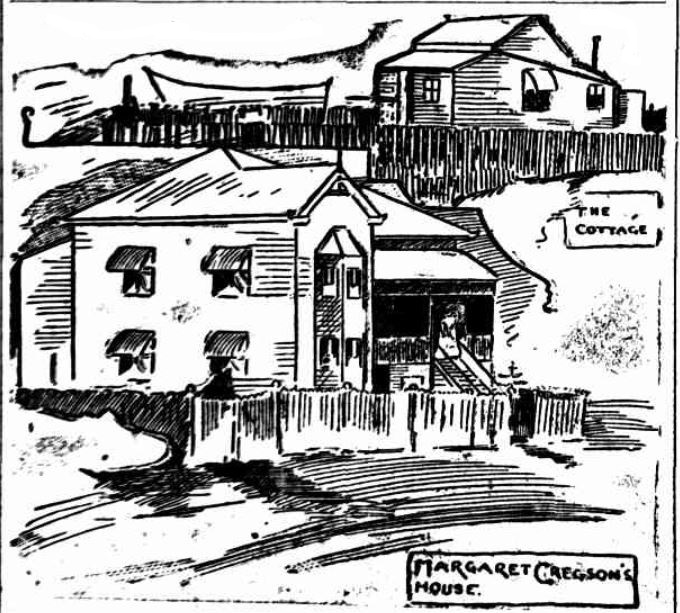
The buildings each having their own name and “functions” or theme. It was a remarkable achievement of its time and was perhaps the largest complex of “disorderly houses” in Queensland.
The houses ‘Botany Villa, SanToy, Bleak House, The Laundry, Marooka, Musgrave Villa and the Wine Shop’ would be the downfall of many a young fallen lady. Equally, it would be the downfall of many a customer; some would leave without their wallets some would barely escape with their lives.
This vast expansion of her empire led Margaret only down one road. Wealth and lots of it. She quickly became known as “The Duchess of Montague Road” but to her girls she was simply known as “Ma or Mother”
Of course, this expansion attracted quite a bit of attention by the licencing men, the police and the courts. Before she knew it The Duchess herself was before the court. Dressed in her finest silk gown, her fur coat, broad hat and wearing all of her jewels. Margaret knew how to make the right impression in public. After all she was an innocent proprietor of a “boarding house”.
The magistrate, who she had appeared before numerous times, had had just about enough of The Duchess and her innate ability to avoid gaol time. Either by legal representation or lack of evidence. This time she was found guilty of selling sly grog at Montague and for harbouring girls for the purposes of a disorderly house. Margaret “The Duchess” Gregson was sentenced to two months imprisonment and a whopping fifty pound fine plus costs. Or in default an additional four months with hard labour.
The Duchess was whisked off in the Black Maria to Her Majesty’s prison for females later known as Boggo Road Gaol. When she arrived, she was admitted just like all the others. However, when she entered the yard, it was like she had walked into her home. You see, the Maison De Joie at Montague was responsible for over thirty-five of the frequent fliers in Boggo Road Gaol at this time, and many, many more in years to come.
Margaret Gregson would only serve her two months imprisonment after paying her fifty-pound fine. This of course would not be the last time the court would see her, nor would it be the last fine that she would pay.
The Duchess – Margaret Gregson would continue working at Montague with a new generation of ‘Lovelies’ and many of the older girls until she retired due to ill health in 1924.
She would linger on for the next two years, eventually passing away in October 1926 at her home at Ascot. Her £25,000 plus estate was left to her seven surviving children and grandchildren. The estate was one of the largest of its time, certainly one of the largest ever seen in her profession. Her remarkable fortune would be worth close to two million dollars in today’s currency.
The only condition placed on the inheritance was that the money was not be spent on anything immoral or illegal. Perhaps, Margaret saw the errors of her ways. Or perhaps she thought herself innocent all along. Either way, the estate would sadly be argued over until the end of 1929.
No other female prisoner in this era had such a profound impact on the story of Boggo Road Gaol. The ladies of Montague would be around the prison for the next twenty years before the houses were demolished to make way for modern commercial buildings.
This story is simply too long, and too wonderful to tell in one go. So, follow along with us over the coming months where we will talk more about the ladies of Montague and the remarkable Margaret Gregson.
This Sunday why not escape the 21st century; leave behind the cars, air conditioning, electricity and modern technology. Bring along the family and show them what life was like before all of the modern conveniences and even some of the things we see as basics to everyday. Click here to secure your tickets.
This article was contributed by Research Coordinator Sue Olsen as part of the ongoing research program for Boggo Road Gaol Pty Ltd. The aim of the program is to bring to light and share articles relating to Boggo Road for the purposes of review and study. Do you have a story to share or something you would like us to know about? You can contact the research team here.
Chief Warder – William Corbett
- On : 24 August, 2018
- By : Boggo Road Gaol
- Category : Stories
- View : 2044
Chief Warder – William Corbett
William Corbett known as Bill, was an experienced warder of thirty-six years in the Queensland Prison Service when he retired aged 67 in 1934. His retirement celebrated on the King’s Birthday was held with great pomp and ceremony. His celebrated career required him to look after some of Queensland’s most notorious prisoners including bushranger and murderer James Kenniff.
Irish by birth, he emigrated from his native County Cavan to Queensland at the age of twenty-one on the immigrant ship Jumna. A sturdy lad he gained employment on the Darling Downs as a labourer and later as a groom and coachman. He met and married Eliza Clarke, his wife in 1897 their son having been born the following year, Bill realised he needed more reliable work. He joined the prison service as a probationary warder on the 22nd of March 1898 and was sent to the Moreton Bay island of St Helena. Bill worked on the island with the long-term male prisoners being sent from Brisbane.
Bill served twelve years on St Helena, with some of the most notorious prisoners in Queensland History, one of them, a name you would be familiar with; James Kenniff, bushranger and brother to Patrick Kenniff. Patrick Kenniff was executed at Boggo Road Gaol (HM Prison Brisbane) in 1903 for the murder of Doyle and Dahlke at Lethbridge’s Pocket. After numerous appeals, James Kenniff’s sentence was commuted to life imprisonment. His sentence was served at St Helena Island initially.
When interviewed by the Sunday Mail in 1940, shortly before his death. Bill Corbett had this to say about James Kenniff: –
‘Jim Kenniff was an exemplary prisoner,’ states Chief Warder W. Corbett, of Highgate Hill, now retired after 36 years’ service. ‘A quiet, unassuming man. He gave us no trouble and was one of the most skilful men with his hands I ever met in prison. He could be taught anything. ‘As were all his family Kenniff was a thorough bushman skilled in all the arts of the bush. For many years he acted as slaughterman and butcher at St. Helena. Afterwards he entered the tailor’s shop and became an expert cutter who could make a suit with any skilled craftsman in Brisbane.’ So highly regarded was he that, by special request of the warders who had been transferred from St. Helena to Brisbane Prison, Kenniff was brought to Boggo Road to become the warders’ cook. It was in this capacity that he served the last portion of his sentence.
Transfer to Brisbane Gaol
After twelve years on the island it was time to move upward again in position for Bill, He had been promoted warder second class and this resulted in his moving back to the big smoke of Brisbane. He entered the service in the men’s division (number 1 gaol) in 1914 and after some time transferred to the new men’s division (number 2 gaol) (the former HM Prison for females) before eventually rising to the rank of chief warder in 1927.
Bill was regarded as a kindly and humane man amongst the prisoners. On his retirement a special ceremony was held in which he was 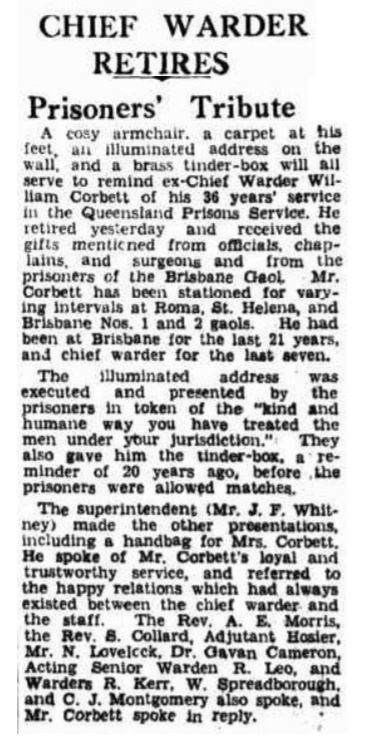
A cosy armchair, a carpet at his feet, an illuminated address on the wall, and a brass tinder box will all serve to remind Ex – Chief Warder William Corbett of his thirty-six years’ service in the Queensland Prisons Service. He retired yesterday and received the gifts mentioned from officials, chaplains and surgeons and from the prisoners of the Brisbane Gaol.
The illuminated address was executed and presented by the prisoners in token of the ‘kind and humane way you have treated the men under your jurisdiction’ they also have him the tinder box a reminder of twenty years ago, before, the prisoners were allowed matches. The superintendent Mr J. F. Whitney made the other presentations including a handbag for Mrs. Corbett.
He spoke of Mr Corbett’s loyal and trustworthy service and referred to the happy relations which had always existed between the chief warder and the staff.
In his retirement speech, Bill Corbett thanked the superintendent and other staff for their kind words. Stating that in his time in the prison service he had witnessed so many changes and good reforms in contrast to the bad living conditions and severe discipline in the gaols years ago. There are now roomy cells, beds, books, electric light and good food of today. In addition, the prisoners nowadays had up to date and hygienic shops, in which to work and they were given greater facilities in regard to correspondence and visits from family and friends.
Retirement
William ‘Bill’ Corbett retired to his Highgate Hill home with his wife, he remained involved in the public service for years, frequently being interviewed for his opinion on various initiatives being peddled by the powers that be. One such instance, he was interviewed in relation to the safety of children at St Helena Island. After the decommission of St Helena as a prison, its likelihood for reuse was debated for many years. In 1937, it was to be converted into a holiday reserve with a causeway to be built from the mainland, and a harbour for yachts erected. As such it would need to be safe for families to visit. There was some debate that it was unhealthy there and that many children had died. William Corbett (who had raised his own children there) greatly disputed this.
William Bill Corbett died just six short years after his retirement aged seventy- three. He was survived by his wife Eliza (nee Clarke) and three grown up children. The esteem in which he was held in the prison service was again put on display at his funeral. The prisoners of Boggo Road sending a cross made from flowers from the prison garden.
This remarkable officer is just one of many that entered the big green iron gates each day. This Sunday, you too can get locked up by one of our former officers! Come inside and find out some of the fascinating aspects of life behind bars. If you are on good behaviour you might even get early parole! You can book your tickets here
This article was contributed by Research Coordinator Sue Olsen as part of the ongoing research program for Boggo Road Gaol Pty Ltd. The aim of the program is to bring to light and share articles relating to Boggo Road for the purposes of review and study. Do you have a story to share or something you would like us to know about? You can contact the research team here
Burglar Bill – William Thompson
- On : 17 August, 2018
- By : Boggo Road Gaol
- Category : Stories
- View : 1949
Burglar Bill – William Thompson
William Thompson, known in every state in Australia as Burglar Bill; has been an associate with some of the country’s most notorious criminals. Some of them cold blooded killers who have ended their days on the gallows.
William Thompson
Alias: Burglar Bill, William David Thomas, James Hooper, William Thomas.
Native Place: England
Age: 47 Years
Stature: 5ft 6 ¼ inches
Make: Slight
Complexion: Dark
Hair: Black
Eyes: Brown
Weight: 10 stone
Previous Convictions: 22
Remarks: No eyelashes; scar left shin; small scar right shin.
William Thompson, known in every state in Australia as Burglar Bill; has been an associate with some of the country’s most notorious criminals. Some of them cold blooded killers who have ended their days on the gallows.
When first entering a life of crime he thought he could beat the law. But after twenty-seven years in and out of gaol, in 1937, he finally realised that crime does not pay. In a rare treat, the Truth newspaper in Brisbane published his full story, perhaps he would tell it best anyhow!
I can look back on those wasted years- years that I cannot recall to live over again, now that I have learned a bit of sense. Perhaps, as crooks go, I have had a particularly eventful life; I have met and consorted with many of the ‘big’ men; I have witnessed executions from inside and I have spent some weeks in a cell that once held the famous Ned Kelly. But those memories are nothing to be proud of. I am well aware that today I am regarded as one of the most persistent burglars in Australia, and I am certainly not proud of my title “Burglar Bill”. Still, those years of my life have passed. I am a habitual criminal, and, I fervently, hope that others may benefit from my experience.
Starting out in 1904 as a sixteen-year-old kid, I was so small that they stood me on a fruit case so that I could see over the edge of the dock. Then it came, slowly and sombrely, my first term, Four years.
There was plenty of dry bread and water and each prisoner was chained to a heavy ball. There were no children’s prisons in these days. These were the old prison days where you served every minute of your sentence.
Imagine being sixteen and living under those circumstances. My associates were all hardened crooks. I drifted into a life of crime and met many infamous crooks.
One I knew well was, Angus Murray who shot a bank clerk in Melbourne with his mate Richard Buckley. Murray paid for his crime at the end of a rope. I was one of the last men to speak to him before he marched to the gallows. By then I had been in and out quite a few times and was in fact a “habitual criminal” and noted cracksman.
Meeting Murray
My meeting with Murray happened this way: I chanced to be in Melbourne shortly before they hanged him. I was arrested on a charge of being a suspected person and while I was in court a chap gave me a message to give to Murray if I went “In” well I duly collected my three-month term.
I made it my job to get near Murray’s cell to give him the word. This was the message I gave him:
“The boys are trying their hardest to get a reprieve for him and if they were successful they would spring him.”
I was to tell him that “the boys were going to tunnel under the prison, up to the chapel, and then get him out after church service. Of course, Murray didn’t get a reprieve and the plot was never discovered.
Another man I met was “Squizzy” Taylor. “Squizzy” was my daily companion in the years 1907 and 1908 when he was married to Dolly Gray and before he became the gangster that died by the gun.
Burglar Bill’s career was hardly a successful one and by his own admission. It was a very monotonous one. For a burglar and safe cracker Bill never really got away with too much loot.
Why I remember the time when I practically broke my back carrying a safe for miles only to find after breaking it that there was 11s in the till! Other times I had gone to a lot of trouble to get the safe door open only to find the magnificent total of two two- penny stamps or something like that!
Invariably the result was the same. Bill was caught and sent back to Gaol. It wasn’t until 1929 however, that Queensland was ‘blessed’ with the presence of the infamous “Burglar Bill”.
To Boggo Road Gaol
William Thompson was arrested in Bundaberg in November 1929 for Breaking, entering and stealing from the store owned by Vincent Patrick Breslin in Gladstone. He with an accomplice Alice Wilhelmina Dalton stole goods and some money. The goods were recovered after they had been sent by train. He appeared before the circuit court and was sentenced to a year and ten months imprisonment with hard labour.
No sooner had he been released, as always, he committed another crime. Fortunately for him Burglar Bill appeared before Justice Macrossan, who, had been trying to change a thing or two about the sentencing of criminals in Queensland. William Thompson appealed to the Judge that his life had been difficult and that he would like another chance to go straight. This being exactly the type of case Justice Macrossan had in mind. Thompson became a test case. He was sentenced to three years imprisonment, but he was released on a hundred-pound bond not to reoffend within the three years.
Well… I will let Burglar Bill tell you the rest.
I’m the chap who Mr, Justice Macrossan, back in 1931, conducted the historic experiment with. I let –
him down, God knows why! I remember it all very vividly. I had been found guilty of breaking and entering a store at Ipswich and on October 6, 1931, I stood before the Judge to receive my medicine. I remember I did not feel good as I stood up in the dock and asked straight out to be given a chance. I told of all my troubles and the outcome of It was that his Honour did give me a chance. It was too good to be true!
After that other weird and wonderful things happened to me. I did something I had never been
guilty of before— I fell In love!
I proposed, she accepted, and we got “spliced.” We didn’t ‘have much cash in the coffers though, and I wanted to see the little woman well dressed. So, guess what I did? I stole some nice dresses for her. Of course, I was caught, dragged before the “beak” and collected a three months’ term. That wasn’t so bad, although It meant that I was torn away from my bride. The worst of It was that I had broken the three years’ bond’ the judge gave me.
Well, I felt pretty ashamed of myself when they dragged me before Mr.Justice Macrossan. I was really very upset, because It’s not often on old crook gets such a break as the judge gave me on the Ipswich job. Well, the blow duly fell. I collected the three years’ term, and was declared an habitual as part of the sentence. “
That meant three things I had broken my word to a very decent Judge, my wife was heart-broken and disgusted, and I was back in gaol for decent sort of a “stretch.”
Burglar Bill served three years and three months with hard labour in Boggo Road Gaol. When he was released, he was ordered to leave the state. Unfortunately, Bill didn’t have two cents to rub together. Local charities and even the detectives of Queensland chipped in ‘a few pounds’ to get Burglar Bill out of Queensland for good.
William Thompson and his wife lived in Victoria where he returned to his family and friends and went back to his old occupation fruit hawking.
Perhaps Burglar Bill turned over a new leaf. Somehow, I suspect not.
This Sunday at Boggo Road Gaol is our monthly Prisoner Tour. Come along, get locked up, and hear from one of our former prisoners Wayne Weaver what life behind bars was really like! Tickets are selling fast, you do not want to miss this! You can book your tickets here
This article was contributed by Research Coordinator Sue Olsen as part of the ongoing research program for Boggo Road Gaol Pty Ltd. The aim of the program is to bring to light and share articles relating to Boggo Road for the purposes of review and study. Do you have a story to share or something you would like us to know about? You can contact the research team here
Escape- Dynamite Escape Plot
- On : 11 August, 2018
- By : Boggo Road Gaol
- Category : Stories
- View : 1721
Escape! – Dynamite Escape Plot
In the last week of May 1954, prison officials at Boggo Road Gaol received a warning from inside the prison that an escape had been planned and that they were to blast their way out with dynamite!

The planned break out of six career criminals would have been the largest in Queensland History at the time. It was huge; and word had reached the officials just in the nick of time.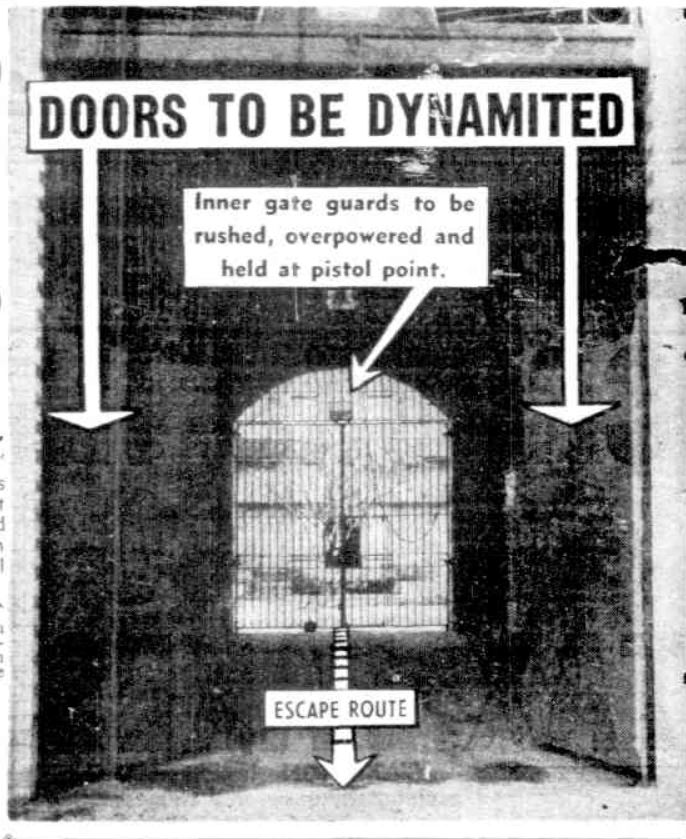
The prisoners were four habitual criminals and two “tankmen” or “safe blowers”. The men, all with the necessary experience to pull this off, needed help from the inside. They had just the right man in mind. This man, however, would be the downfall of the entire plot.
The Plot
One Sunday morning after the usual Sunday sacred services and concert, the six prisoners were to rush to overpower the guards of the inner gate and demand the front gate keys. Should they be refused, the “tankmen” under the protection of two prisoners with guns would dynamite the two heavy steel doors of the gaol.
Guns and dynamite would be smuggled in from “contacts” on the outside and further assistance to complete the escape would be provided afterwards.
Ratted them out
The warning of the escape came via a most unlikely source – a notorious Melbourne underworld big shot, Norman Bradshaw alias Cornelius. Bradshaw was serving an eighteen-month stint for false pretences. Bradshaw named the six prisoners involved in the plot, claimed they wanted him to be in it. Likely they wanted his worldly contacts to help with providing the essentials for the escape.
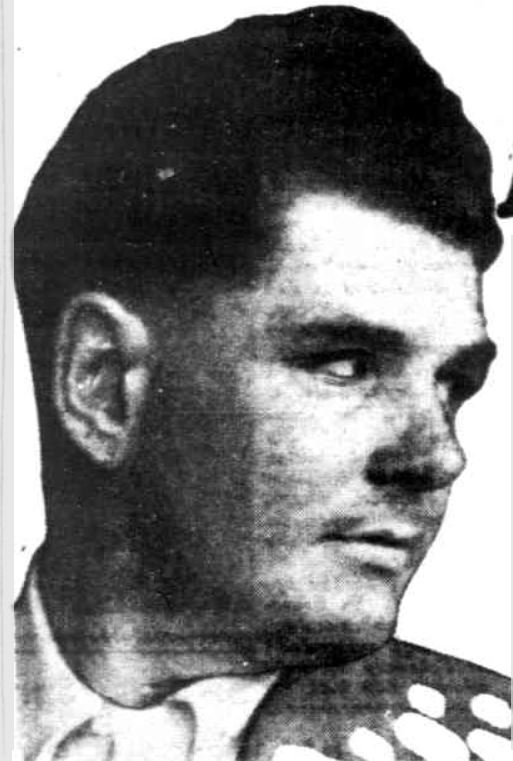
The six prisoners were separated as a result of the subsequent investigation. Each received an a
dditional three months to their sentence for attempted escape. Two of the more troublesome were sent to Stewarts Creek prison in Townsville. The others widely separated into the most secure wings of Boggo Road Gaol.
Unfortunately, even in the most secure prisons, revenge will strike. Bradshaw was attacked by prisoners several times over the coming months. Eventually locked away for his own safety, he would serve his last six months in solitary confinement.
This Sunday come behind the giant red brick walls and heavy steel gates and hear about some of the desperate prisoners that tried to escape Boggo Road Gaol and some of the few that succeeded. You can book your tickets here
This article was contributed by Research Coordinator Sue Olsen as part of the ongoing research program for Boggo Road Gaol Pty Ltd. The aim of the program is to bring to light and share articles relating to Boggo Road for the purposes of review and study. Do you have a story to share or something you would like us to know about? You can contact the research team here
A Female Burglar- Maria O’Rourke
- On : 2 August, 2018
- By : Boggo Road Gaol
- Category : Stories
- View : 1743
A Female Burglar – Maria O’Rourke
Young women of poor origins quite frequently found themselves falling afoul of the law. Her Majesty’s Prison for Women Brisbane at Boggo Road was where most of these women ended up.
Maria O’Rourke
Known aliases: Violet Gray; Lapworth ; Green ; Ruby Hanley
Native Place: Queensland
Aged: 19 years
Height: 5 ft
Make: Medium
Complexion: Fresh
Hair Colour: Brown
Eye Colour: Blue
Weight: 7 Stone 12 oz
Previous Convictions: 8
Marks: Nil
Maria first appeared before the bench when she was just fourteen years old. As she was walking past the residence of Mr and Mrs Powell at South Brisbane, Maria spotted an open window. She took the opportunity to steal a ring from the chest of drawers belonging to Mrs Powell. She was seen wearing the ring which was later identified by Mr. Powell. Maria was taken before the bench and fined 10 shillings or in default, one month in prison.
This was the beginning of a long run of break and enters and charges of stealing for Maria which would eventually see her serving three years imprisonment with hard labour in HM Prison for Females Brisbane later known as Boggo Road Gaol. No sooner had Maria been released, she found herself in trouble again and back behind bars.
The time behind bars was definitely not a good experience for Maria. She began to associate with all of the wrong kind of people. Interestingly, every time Maria is before the court, her mother appears on her behalf begging for her daughter not to be sent to gaol, and every time it has no effect. Makes one wonder what the home life must have been like.
In researching this article I have had the greatest of difficulty locating even the smallest sliver of information on the O’Rourke family. This tells the researcher one thing -they were poor, in fact likely the poorest of poor. Perhaps that is why young Maria was on the street at just fourteen years old, committing some very serious crimes.
Without lawful means
Perhaps the saddest part of Maria’s story is yet to come. In May 1905, police raided a known house of ill fame (a known brothel) in Albert street belonging to a Greek man named George Antonio.
We have discussed George Antonio before when looking at the case of the Juett sisters. Indeed, on this particular day, Maria O’Rourke was arrested with Lily Juett at Antonio’s as being without lawful means of support. A similar charge to vagrancy, it is usually the law stepping in for the person’s own good, providing a roof over their head and a hot meal. The typical sentence for this “crime” is three months imprisonment with hard labour. Lily Juett was sent to the care of the good people of the Salvation Army Home For Wayward Young Ladies. Maria was not so lucky. She was sentenced to three more months behind the walls of Boggo Road Gaol.
For more about Antonio’s house of ill fame click here
Maria, it seems, did not learn her lesson for some time to come. It was a vicious cycle and Maria was only just 19 years old. In and out of prison for the next three years on similar charges as before; stealing something or being arrested for having nothing at all.
Finally, it seemed things were looking up for Maria; after her final release from prison in March of 1910, she meets a fine young man named McRae. Just two short months later, they were married in Brisbane. Never again does Maria appear before the court. She has turned the corner and made it out of the shadows.
The same cannot be said for the majority of women with the same history. For some, their entire life will be in and out of the notorious HM Prison for females more commonly known as Boggo Road Gaol.
Want something cool to do this Sunday? Learn more about the women of Boggo Road Gaol by taking an 11am History Tour and watching our Prison Players perform! You can book your tickets here
This article was contributed by Research Coordinator Sue Olsen as part of the ongoing research program for Boggo Road Gaol Pty Ltd. The aim of the program is to bring to light and share articles relating to Boggo Road for the purposes of review and study. Do you have a story to share or something you would like us to know about? You can contact the research team here
The Speed King Crook – Henry Ising
- On : 25 July, 2018
- By : Boggo Road Gaol
- Category : Stories
- View : 1500
The Speed-King Crook – Henry Ising
In the winter of 1931, South-East Queensland was in the grips of a crook like no other that the Queensland authorities had seen before. German naval deserter Henry Ising was the speed king crook. Ising was fast, clean and managed to carry out fourteen separate robberies without being detected. That was until he got a little too flash with the cash.
Native of: Germany
Arrived: Overland from NSW
Year: 1930
Trade or Occupation: Carpenter
Age: 20
Religion: Roman Catholic
Height: 5 feet 10 inches (178cm)
Weight: 10 Stone (63kg)
Make: Strong
Complexion: Fresh
Hair: Brown
Eyes: Brown
Education: Read and Write
Remarks: Mole on right side of chin
In the winter of 1931, South-East Queensland was in the grips of a crook like no other that the Queensland authorities had seen before. German naval deserter Henry Ising was the speed king crook. Ising was fast, and clean and managed to carry out fourteen separate robberies without being detected. That was until he got a little too flash with the cash.
Deserter
It is not known exactly when Henry Ising arrived in Australia. He is known to have been in New South Wales in August of 1930, and it is thought that he deserted from a German naval ship in port.
Ising came to Queensland in the end of 1930, seeking work in the north. As we would soon discover, Isling wasn’t much into looking for work and quickly turned his hand to thieving instead.
Stop Thief!
On his stolen motorcycle, he acquired himself a loaded revolver, some cash and some clothing in Murwillumbah, New South Wales. Fleeing over the border, he made his way to Ipswich. Over the next few days in the beginning of May; he broke into several stores making off with clothing, tobacco and some loose change.
Next. he was on to Brisbane, where again he would break into several stores including Rosendorff Limited stealing a Gramophone. The list continues – over the next few weeks, Ising quickly filled his pockets with the proceeds of his crimes.
Cash Splash
Henry Ising was getting too good at his crimes, with his ego boosted, he made one big cash splash. No longer would he ride around on his motorcycle. He would buy a car and ride around in style. Just like a kid with a brand-new toy, Ising drove the shiny new car everywhere. Even on the job!
Detectives Damro and Lloyd investigating the recent spate of thefts discovered the young man had quite a bank for a carpenter and painter that hadn’t done much work.
‘“He had money to burn, and honest men in these times are not burning too much money” argued the sleuths’
To Toowoomba
After a few more targets in the city, the authorities were on his trail. Ising had to get out of town, and quick. He left Brisbane and headed back to the Darling Downs. Arriving in Toowoomba, he couldn’t resist the “soft” country targets. The friendly locals were all too happy to show Ising their merchandise. The clean cut, wealthy looking young man cut quite the figure in town. Little did the good citizens of Toowoomba know, he was simply choosing what to steal next!
By July, Ising had racked up a quick fortune, his fourteen jobs had made him quite a wealthy man. Living the high life, he returned to Brisbane to his home at Spring Hill. He had enough to live on for a while. Ising thought he had gotten away with it all; that is until Detectives Damro and Lloyd rapped their knuckles on his front door.
In his possession they found his kit containing a loaded revolver, a mask, a bunch of skeleton keys, one of which would open almost any lock, and a kit of tools for forcing entry. They also found some of the stolen property and some cash a total value of £53 well shy of the estimated £270 that was missing.
Before the Bench
Ising appeared in the Brisbane Police Court on the 14th of July some three months after his thieving tour of city and country began. Prosecuted by Detective Senior Sergeant McIver on fourteen separate charges, a list of the myriad of items stolen was placed before the court.
Cameras, jewellery, watches, boots and shoes, men’s leather coats, women’s fur coats, loose cash, boxes of cigars, reach-me down suits, musical instruments, pistols, tobacco and cigarette cases just to name a few.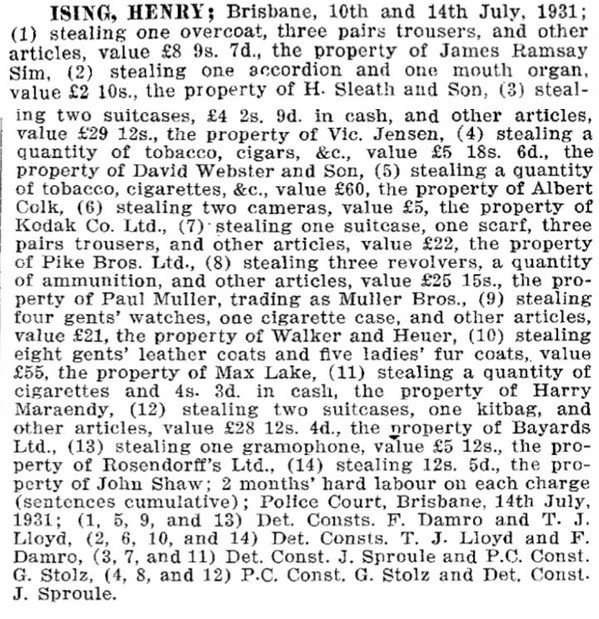
Describing how Ising made entry to the businesses, Detective McIver said, “If the window was easily forced, that was his way of entry, if not, the skeleton keys would unlock the door.” Ising moved quickly, stealthily, not staying anywhere very long and always did his jobs in the middle of the night.
Ising had earlier plead guilty to all charges. Police Magistrate Ferguson sentenced Ising to two months imprisonment with hard labour on each of the fourteen charges, the sentences to be served cumulatively for a total of twenty-eight months.
Ising received the sentence with a brazen grin on his face. It’s hard to say for sure, but I suspect he would not be grinning when the black maria pulled up at the gates of Her Majesty’s Prison Brisbane – the notorious Boggo Road Gaol.
Ever wondered what it would be like to have both a former officer and prisoner taking you on a tour of the gaol at the same time? This Sunday join Kevin and Wayne on this special 90-minute tour! This tour is strictly 15 years and over ONLY due to the language used and images seen on the tour. Tickets are selling fast, you do not want to miss this! You can book your tickets here
This article was contributed by Research Coordinator Sue Olsen as part of the ongoing research program for Boggo Road Gaol Pty Ltd. The aim of the program is to bring to light and share articles relating to Boggo Road for the purposes of review and study. Do you have a story to share or something you would like us to know about? You can contact the research team here
Trailblazer- Bridget Dunne
- On : 18 July, 2018
- By : Boggo Road Gaol
- Category : Stories
- View : 2424
Trailblazer – Bridget Dunne
In the twentieth century it was common for occupations to be handed down from father to son, particularly when it relates to a position in a government department – this was seen to be a very successful step forward, indeed, a hand up. This week we are looking at an interesting case of a father to daughter occupational connection. Christopher and Bridget Dunne were both employees in the Prisons Department for their entire careers in Australia, both having served a portion of their career in the Brisbane Prison later known as Boggo Road Gaol.
In the twentieth century it was common for occupations to be handed down from father to son; particularly when it relates to a position in a government department as this was seen to be a very successful step forward; indeed, a hand up. This week we are looking at the interesting case of a father to daughter occupational connection. Christopher and Bridget Dunne were both employees in the Prisons Department for their entire careers in Australia. Both having served a portion of their career in the Brisbane Prisons later known as Boggo Road Gaol.
Indeed, it was very common for nepotism to take place in Government Departments, usually because those in the employ of the government could often afford to educate their children (particularly sons) in some of the finer schools in Queensland. Those students would then make the finer cadets and employees of the department. Young ladies also had the option of better schooling, but it was very uncommon. Women in society of the time were not generally among the working classes, particularly if she was interested in marriage and children (which was just the done thing).
Some young ladies, however, were not. I suppose dear Bridget would fall into that category. Most of the ladies in the Prisons department were the wives of prison officers. This is in fact the first father – daughter connection I have come across. Bridget was indeed a trailblazer.
Christopher Dunne
Clipper ship Golden CityChristopher Dunne was born in Kells, County Meath, Ireland in 1830. He was married first to Bridget Timmins in 1862. They had two older children and Bridget was expecting their third child on the voyage to Queensland on the Golden City. Their third baby was born somewhere between London and Brisbane and was listed at the customs inspection of the ship. Baby Bridget Dunne was the fifth member of the family.
Sadly, it seems that Bridget Dunne (nee Timmins) did not do well from the pregnancy and long voyage and died just a few weeks later. She was buried at the Paddington Cemeteries (where Suncorp Stadium now stands) and there is no formal registration of her death.
Christopher Dunne joined the prison service not long after the family arrived from London. His first appointment was at the Brisbane Gaol then located at Petrie Terrace; then at the police lockup at Ipswich.
It was in Ipswich that he would meet his future bride Maria Doorley. Maria too was a young Irish lass; she had emigrated with her father on the Saldanah in 1863 at just fourteen years old. They were married at St Andrew’s Catholic Church in Ipswich in 1872.
Indeed, the Catholic faith would be a strong influence in Christopher’s life. All his children were baptised into the church, both of his marriages were solemnised in the church, and even his last moments would be in faith.
Christopher and Maria went on to have four more children. The family resided at Ipswich at their home “Argan” on Margaret Street for the remainder of their days. Christopher would go on to work at the new HM Brisbane Prison in 1883 (Number One Division Boggo Road Gaol) for two years before returning home to Toowoomba and joining the staff at the Toowoomba Gaol.
Christopher remained at the Toowoomba prison as Senior Warder until his retirement in 1899. He died some twelve years later in 1911 and was buried at the Toowoomba Cemetery. His obituary in the Darling Downs Gazette summarised his extensive career but also his character:
He was the last surviving member of “The Dunne’s of Carstown”; Deceased was of a very retiring disposition but by his unostentatious manner he endeared himself to numerous friends. Numerous wreaths, telegrams and letters were sent from all over the state (fifty-three wreaths and thirty-one telegrams and letters).
His remains moved from St Patricks Roman Catholic Church to the Toowoomba Cemetery where he was laid to rest.
Bridget Dunne
Bridget began her career in the prison service working under her father at the Toowoomba Prison as wardress in the industrial school for girls in 1898. This was initially under a trial basis for six months; I suppose something like a traineeship. It obviously meshed well, as Bridget was officially made a wardress in the official announcements for the Prisons Department in 1899. Interestingly, just before her father retired!
Bridget went on in leaps and bounds from there, working under the mentorship of Sarah Ann Nixon, Wardress in the Women’s Prison at Toowoomba. Quickly rising through the ranks, she was soon temporary senior warder when Sarah Ann Nixon was made Matron in 1901.
During this time a great deal of change was happening in the prisons of South East Queensland. Indeed, a great shift was soon to be made, in the next twelve months three prisons would close and the Her Majesty’s Prison Brisbane (Female Division) would open.
The female division is the only remaining section of the Brisbane Prisons (later known as Boggo Road Gaol). This division would later be taken over as a men’s division and the women would be moved several times on the gaol reserve.
One of the prisons that eventually closed was the female prison at Toowoomba. Bridget Dunne became Warder and Sarah Ann Nixon became Senior Warder under Matron Sarah Browne.
Over the next five years, Bridget learned to manage the women under her charge. Towards the end of 1908, Matron Sarah Browne fell ill and subsequently retired. Sarah Ann Nixon was promoted to Matron and Bridget was promoted to Senior Warder, quite a step up from her position as wardress. As the years would pass she would rise in rank again, this time in March 1923 when Sarah Ann Nixon fell ill, she was made Temporary Matron. By September, Sarah Ann Nixon had retired, and Bridget was made Matron of the Female Division, Boggo Road Gaol.
Sadly, Bridget would only remain in the position for two and a half years. Having been ill for the previous twelve months, she was forced to take leave in July 1926 after almost thirty years of service. Bridget would never return to her position. She died on the 13th of October 1926 at just fifty-eight years old.
Bridget Dunne had never married, nor had she had any children. Her remains were sent by train to Toowoomba. She was buried with her father at the Toowoomba Cemetery.
Her obituary in the Queensland Times newspaper best describes her career and her character:
She always displayed a sympathetic and humane spirit to those who came under her charge. Often at personal inconvenience. Little acts of kindness were performed by her, particularly when they were once more entering on the battle of life.
These remarkable officers are just two of many that entered the big iron gates each day. This Sunday, you too can get locked up by one of our former officers! Come inside and find out some of the fascinating aspects of life behind bars. If you are on good behaviour you might even get early parole! You can book your tickets here
This article was contributed by Research Coordinator Sue Olsen as part of the ongoing research program for Boggo Road Gaol Pty Ltd. The aim of the program is to bring to light and share articles relating to Boggo Road for the purposes of review and study. Do you have a story to share or something you would like us to know about? You can contact the research team here
Mischievous, Malevolent or Mad? Cyril James MacIntosh
- On : 12 July, 2018
- By : Boggo Road Gaol
- Category : Stories
- View : 2475
Mischievous, Malevolent or Mad? Cyril James MacIntosh.
Cyril James MacIntosh was perhaps one of the most frequent prisoners in gaols all over the eastern side of Australia. His remarkably habitual career as a celebrated bogus doctor graced Queensland, New South Wales, Victoria, South Australia and Tasmania. Known by at least seventeen aliases and with at least forty charges to his name, the question remains: was he simply mischievous, malevolent or completely mad?
Known Alias: Cyril McIntosh, James Thomas Fletcher, Dr. Fletcher, James Fennett, Thomas Fennett, Dr. Fennett, Dr. Ferguson, Dr. Fletcher Fitzgerald, James Leo, James Leo Anderson, David Hardie, David Hardy, John Thomas Fraser, George Arthur Sampson, Morgan Lane, Dr. Morgan Lane, Dr. Gillespie, John Thomas Fletcher and of course Cyril James MacIntosh!
Native Place: Queensland
Year of Birth: 1887
Height: 5 ft 7 inches (170cm)
Weight: 11 stone 2oz (71kg)
Eyes: Blue
Hair: Brown
Make: Slight
Complexion: Fresh
Marks: Scar centre of forehead; scar right eyebrow; large mole under right ear; operation scar right side of stomach;
It was very difficult to figure out what exactly to call Cyril James Macintosh. With seventeen known aliases and no doubt many more that lie undiscovered, we thought best to call him what he was most commonly known as. Even that statement is borderline; his convictions were so numerous, and over such a vast area it is practically impossible to find them all. We will do our best to pick some of the more fascinating stories amongst his lifetime of crime and outline them here.
Cyril James Macintosh was born James Thomas Fletcher in Brisbane, Queensland in 1887. It was here that he would have his first run ins with the law.
James Thomas Fletcher
On February the 19th 1908, James Thomas Fletcher entered Mrs Macdonald’s boot shop adjoining the Royal Bank. He approached the counter and asked if Mrs Macdonald could oblige him with a blank cheque. She refused and sent him to the bank. A short time later Fletcher returned and said that the banker had told him he could obtain a cheque from anyone he knew. Again, Mrs Macdonald refused. He returned a while later in an exasperated state stating to Mrs Macdonald that he must have the cheque before 5pm at the latest and the bank was closed. Mrs Macdonald relented and presented a blank cheque.
Earlier, Fletcher and two of his friends had checked into the Transcontinental Hotel; of course, they had no money to pay for the lodgings, which necessitated the need for the heist on Mrs Macdonald. Fletcher returned to the hotel in the afternoon and presented the cheque, but by then, it was no longer blank. The cheque was made out for £10 sterling and made out to cash for John Thomas Fletcher. The cheque was cashed by Arthur Earl. Quite casually, Fletcher told him to deduct a weeks board and also the bill for his young friends who were leaving soon. Earl made the deductions and handed over £7 and 11 shillings in cash. Earl later saw Fletcher in the hall with his young friends and their luggage; Fletcher stated that he was just seeing them off. Of course, he didn’t just see them off, he went with them as far as Dalby.
Fletcher was later arrested in Dalby posing as the travelling millionaire. Appearing before the bench, Fletcher admitted that he had forged and uttered a cheque, and falsely misrepresented himself. He was sentenced to two years hard labour. The sentence, however, was suspended, and he entered a bond to be under good behaviour for £100.
Fletcher however, did not remain on good behaviour. He was sentenced in November 1908 for consenting to an act against the order of nature or an unnatural offence. This was the legal term for having engaged in a male homosexual act. Fletcher was sentenced to six years imprisonment; his counterpart, four years, both received sentences with hard labour. Whether or not Fletcher was a gay man is not known. This was his only sentence on such an offence of the time. Indeed, Fletcher did seem to have a very quiet social life. Very little evidence is available, however, to confirm his sexual preference.
Fletcher couldn’t behave himself in prison, therefore, he was sentenced to an additional four months for breach of the prison rules! He was released in September 1913.
Fletcher would continue with his mischievous ways, repeatedly in and out of prison in Brisbane for a range of offences relating to fraud, uttering and false pretences.
Thomas and James Fennett 1915
We next hear from him in Sydney, New South Wales, where again he misrepresented himself and fraudulently obtained the use of a motor car. This time, he is registered in Long Bay Gaol as Thomas Fennett. Everything about his description matches with James Thomas Fletcher apart from the fact that he had also added more marks – a tattoo on his right forearm – J.F. above S.H. After being found guilty, he was sentenced to six months prison with hard labour.
No sooner had he been released, he appeared a second time at the gates of Long Bay Gaol. This time, for an additional eight months for false pretences. Subsequently, he was sentenced for a further 6 months under the name of James Leo Anderson.
The “Doctor” at war?
Returning to his birth name -James Thomas Fletcher, He enlisted into the Australian Army in Sydney on the 16th May 1916.
Even in this honourable role, Fletcher misrepresented himself as a medical student or a dentist. Thankfully the army seemed to have seen sense and not made him a medic. In the infantry, Fletcher was wounded in action in France. However, his life of crime was not over, even in the military he could not obey the rules. Fletcher was court martialed three times for various offences all relating to dereliction of duty or not obeying orders. Seems typical doesn’t it? Eventually, the Army had had enough of Fletcher and discharged him home. His file held at the National Archives has a remarkable 140 pages.
Home for only six weeks, he was again in trouble and was lodged in the Long Bay Gaol. This time, using the alias James Leo Anderson. He would go on to serve the next five years with hard labour, bouncing in and out of Long Bay under James Leo Anderson, Cyril McIntosh and David Hardy (or) Hardie.
An extensive career
This list of names, sentences and time served for Cyril McIntosh simply goes on and on and on. Into the late 1920s he was in trouble in Victoria, again, for posing as a licensed medical practitioner, for fraud and false pretences, and obtaining the use of a motor vehicle and lodgings by fraud.
In the early 1930’s, MacIntosh reappears in Queensland. This time, passing himself off as Dr. Cyril McIntosh, he again passed himself off as the good “doctor” looking for rooms to practice from. Again, he obtained these under false pretences and was sentenced twice for six months with hard labour for each time. In the late 30s and into the 40s, he appears in numerous courts in Adelaide and Tasmania, this time as Dr. Morgan Lane.
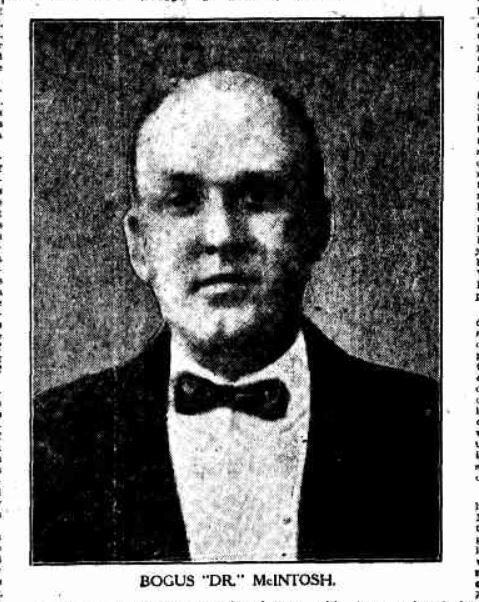
there is no doubt he believed himself qualified. There are many stories of the good “doctor” having helped people in situations of peril or sickness and even tragedy. So, while his crimes were illegal, he never did harm to another person. In fact, some would go as far to call him a hero in the truest sense of the word.
Perhaps the Truth in describing the career of McIntosh said it best…
“Truth” in various states has exposed McIntosh time and time again. But exposure means nought to the man. He doesn’t resist the inevitable arresting hand of the police force. He “goes quietly” and quite genially.
He has been in gaol so many times that gaol has no terrors for him. “Inside” he is a good and obedient prisoner and makes every use he can of the penitentiary library. But his career of imposition has been so long maintained that he can now be regarded as utterly incorrigible and thus the question arises whether Mcintosh is mad.
He certainly is not normal.
Doctor” MacIntosh, Fletcher, Anderson, Hardy, Lane etc. is certainly one of the more interesting characters I have had the privilege of researching. A fascinating man. The question of his sanity is one that comes up time and time again in the court records. His career is so long it is simply impossible to do it justice in these pages. So, if you have the time, search the newspapers on Trove and read for yourself the fascinating antics of this bogus character.
This Sunday at Boggo Road Gaol is our monthly Prisoner Tour. Come along, get locked up, and hear from one of our former prisoners Wayne Weaver what life behind bars was really like! Tickets are selling fast, you do not want to miss this! You can book your tickets here
This article was contributed by Research Coordinator Sue Olsen as part of the ongoing research program for Boggo Road Gaol Pty Ltd. The aim of the program is to bring to light and share articles relating to Boggo Road for the purposes of review and study. Do you have a story to share or something you would like us to know about? You can contact the research team here
Escape! The Cracow Robber – John Howard
- On : 6 July, 2018
- By : Boggo Road Gaol
- Category : Stories
- View : 1976
Escape! The Cracow Robber – John Howard
John Howard – The Cracow Mail Car Robber was charged in May of 1936 of having held up the Cracow Mail Car. The charge was highway robbery just like many bushrangers before him, it was a serious crime. Howard was fortunate to only receive seven years with hard labour in Boggo Road Gaol.
Native Place: Queensland
Age: 38
Height: 6 feet (183cm)
Weight: 12 Stone 6 oz (79kg)
Hair: Sandy Brown
Eyes: Blue
Complexion: Ruddy
Marks: Scar right cheek
John Howard – The Cracow Mail Car Robber was charged in May of 1936 of having held up the Cracow Mail Car. The charge was highway robbery just like many bushrangers before him, it was a serious crime. Howard was fortunate to only receive seven years with hard labour in Boggo Road Gaol.
Attempted Escape
Monday 7th August 1937, Officer Wyndibank was escorting John Howard from his cell shortly after 5am to the gaol kitchen for his breakfast shift. While Wyndibank was bolting a side door to the kitchen Howard ran from the room by another door and just then a section of the wall lights fused.
The lights in the kitchen and nearest wall towers were not affected however Wyndibank immediately gave the alarm and began to search.
Warder McCarthy ran to the track that runs between the stockade fence and the prison wall, Howard, spotting him ran back towards the kitchen where he was challenged by Officer Wyndibank and taken into custody.
Once Howard was secured, the officers searched the area around the stockade fence and found a rope fashioned from unbleached hanging from the stockade fence and nearby was a pair of slippers.
The rope, about 25 feet long was made from material smuggled from the prison tailors shop and plaited into a thick rope. It was attached to the wall by a hook formed from a kitchen fire poker.
A second prisoner Patrick Naylor who was working in the blacksmiths shop was charged with having assisted in the attempted escape. Evidence at a subsequent inquiry would allege that Naylor had obtained a 3-foot length of galvanised iron water pipe and cut it into a section fifteen inches. It was wound around the kitchen poker to strengthen it.
Both Howard and Naylor were taken into custody and imprisoned in Number 1 division in solitary confinement. Six other members of the kitchen staff were discharged from their position and replacements sought. A conspiracy having been suspected.
Both Howard and Naylor were convicted on the escape attempt and sentenced to the maximum additional term of 6 months with hard labour.
Robbery Under Arms
Saturday March 28th, 1936;
The Cracow mail car left Eidsvold shortly after 3pm for the return trip to Cracow with the pay of the workers of the Golden Plateau No Limit gold mine. The regular driver Alexander Miller being unavailable to drive that afternoon the job was left to 23-year-old Charles Walter Williams. Williams had along with him Mrs Violet Mc Dowell the wife of a tool sharpener engaged at the mine, fifty-two miles into the sixty-six-mile journey, around 5:45pm Mrs McDowell left the car to open the wire gate crossing the road when Howard leapt from his hiding spot and held a rifle to her chin. Howard next pointed the rifle at Williams telling him to “get out of that seat” he did. Howard told them both to get back, as he climbed into the driver’s seat and disappeared into the dust on the road to Cracow.
In the back of the car was the £1400 cash for the wages of the employees at the Golden Plateau, twelve registered packages belonging to the mine and eight sacks of mail. The cash £1350 in notes and £50 in silver and copper.
Williams and McDowell raised the alarm after walking over ten miles before being picked up on the road to Cracow. Local police at once set out in pursuit of Howard. Described as 30 to 40 years old, six feet high and weighing around 12 to 13 stone. He was dirty, wearing a Garbadine coat, dirty sand shoes and a dirty handkerchief tied on the lower half of his face. He had sandy coloured hair and blue eyes.
Capture
Foolishly, Howard returned to Cracow a few days later and tried to purchased goods with some of the stolen cash. Howard had been there some months before to purchase goods some of these items he were found by the police at his hide out back on the side of the road. Subsequently identified by the shopkeepers in Cracow, Howard was arrested and charged with Robbery under arms.
He was transported to Eidsvold, where he made an appearance in the Eidsvold police court. He was then remanded to appear in the Gayndah police court the same afternoon. Where he admitted that he was the man they were after and deeply apologised to Mrs McDowell for having caused her significant distress. He further assisted the police in locating the remainder of the missing money and the 22-caliber automatic rifle used in the hold up.
The Hudson motor car used to carry the mail from Eidsvold to Cracow had earlier been found by police. Mrs. McDowell and Williams had identified it as the vehicle they were riding in and positively identified Howard as the one who had held them up on their journey.
It was the assistance the gave police and the subsequent apology that Howard would rely on as his grounds for appeal.
Trial
Remanded to appear before the Rockhampton Circuit Court on the 12th of May 1936, Howard was subsequently found guilty of all charges.
- Engaged the successful hold up of the Cracow mail car.
- Robbery under arms of money intended to pay the workers of Golden Plateau Mine.
- Having stolen with actual violence a motor car.
Further evidence given at the trial would show that Howard was a returned solder with a good record. He was in the service for three years and had been shot in the right cheek during the war and gassed.
Judge Brennan in summing up said
“The crime for which you have been charged is a most serious one. I have sentenced you to seven years with hard labour. I could have sentenced you for life. If you feel the punishment is too harsh you can appeal to the full court.”
The Appeal
John Howard would attempt to appeal the decision. As we said earlier on the grounds that he had been most helpful in assisting the police to locate the remainder of the stolen money, had lead them to the location of the missing rifle and had apologised for his actions.
Justice Henchman having none of this said “you only apologised because you were caught. You said yourself had you have been free you would not have apologised”
A modern-day bushranger.
Justice Henchman continued further “We thought that Ned Kelly and his gang had gone in Australia. Ned Kelly was kind to women too. In this case you made careful preparation to hold up that coach. It was done in keeping with the greatest traditions of such robberies under arms, and you took the opportunity when you knew the wages were going to Cracow. Your request for appeal is denied.”
So, it was, Howard was sent of to St Helena Island prison for seven years with hard labour. Only that St Helena closed, John Howard would not have ever been in Boggo Road Gaol. Howard was one of the prisoners moved across to number two division Boggo Road Gaol when the women’s prison was moved elsewhere on the block.
This escape attempt had a profound effect on the prison. The rules for the management of prisoners and how they would be punished will forever be changed as a result. Prisoners lost privileges, Officers were severely reprimanded; and the prison searched from top to toe.
This Sunday, you can see for yourself the section of wall that John Howard climbed over in our Escapes Tour. Located directly behind D Wing. The Escapes tour is hosted by Director Jack Sim this is a rare treat! Don’t delay book your tickets today!
This article was contributed by Research Coordinator Sue Olsen as part of the ongoing research program for Boggo Road Gaol Pty Ltd. The aim of the program is to bring to light and share articles relating to Boggo Road for the purposes of review and study. Do you have a story to share or something you would like us to know about? You can contact the research team here

